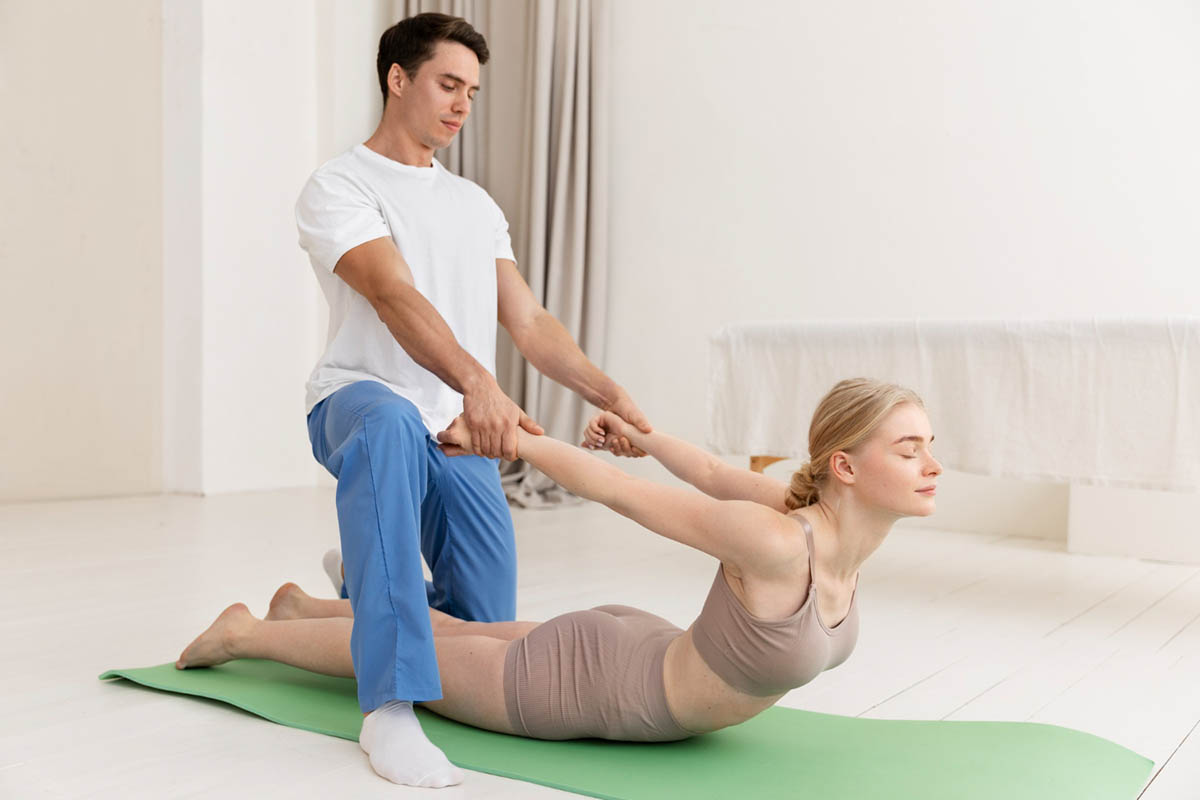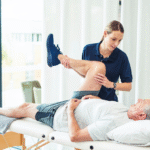Lower back pain is one of the most common health issues people face, whether from prolonged sitting, poor posture, injury, or general wear and tear. It can range from a mild discomfort to severe pain that affects daily life. Fortunately, physiotherapy exercises are a proven way to manage and even eliminate lower back pain — safely and naturally.n how they help, and give practical tips to do them correctly. Whether you’re a desk worker, an athlete, or a senior citizen, these exercises can help you move better and live pain-free.
Why Physiotherapy Exercises Work for Lower Back Pain
Physiotherapy exercises target the root causes of back pain rather than just masking the symptoms. Here’s how they help:
- Strengthen back and core muscles
- Improve flexibility and mobility
- Correct posture and alignment
- Boost blood flow and reduce stiffness
- Prevent future injuries
When done regularly and with proper form, these exercises can help you recover from pain, improve daily function, and avoid surgery or medication.
1. Cat-Cow Stretch
Purpose: Improves spine flexibility and relieves tension.
How to do it:
- Start on all fours, hands under shoulders, knees under hips.
- Inhale as you arch your back (cow position), lifting your head and tailbone.
- Exhale as you round your back (cat position), tucking your chin and pelvis.
- Repeat slowly 10–15 times.
Tips:
- Move with your breath.
- Avoid jerky movements.
- Keep your shoulders relaxed.
2. Pelvic Tilts
Purpose: Strengthens the abdominal muscles and stabilizes the lower back.
How to do it:
- Lie on your back with knees bent and feet flat on the floor.
- Tighten your abdominal muscles and flatten your back against the floor.
- Hold for 5–10 seconds, then relax.
- Repeat 10–15 times.
Tips:
- Don’t lift your hips.
- Breathe normally throughout.
- Focus on the small movement of tilting the pelvis.
3. Knee-to-Chest Stretch
Purpose: Stretches the lower back and relieves tension.
How to do it:
- Lie on your back with knees bent.
- Bring one knee toward your chest, holding it with both hands.
- Hold for 20–30 seconds, then switch legs.
- Do 2–3 rounds per leg.
Tips:
- Keep your head and shoulders relaxed.
- If both legs feel tight, you can do both knees at once.
- Avoid bouncing or pulling too hard.
4. Bird Dog
Purpose: Improves balance and strengthens back and core.
How to do it:
- Start on all fours.
- Extend your right arm and left leg straight out.
- Hold for 5 seconds, then return to starting position.
- Switch sides. Repeat 10 times on each side.
Tips:
- Keep your hips level.
- Engage your core to avoid sagging.
- Move slowly and with control.
5. Bridge Exercise
Purpose: Strengthens glutes, lower back, and core muscles.
How to do it:
- Lie on your back with knees bent and feet flat.
- Press through your heels to lift your hips off the ground.
- Squeeze your glutes at the top.
- Hold for 5 seconds, then lower down slowly.
- Repeat 10–15 times.
Tips:
- Don’t over-arch your back.
- Keep knees aligned with your hips.
- Use a mat or soft surface for support.
6. Child’s Pose (Modified for Lower Back)
Purpose: Gently stretches the spine and releases tight lower back muscles.
How to do it:
- Kneel on the floor, big toes touching, knees apart.
- Sit your hips back toward your heels and stretch arms forward.
- Let your forehead rest on the floor.
- Hold for 30 seconds to 1 minute.
Tips:
- Use a pillow under your hips or chest for more comfort.
- Breathe deeply into your lower back.
- Great for relaxing after a long day.
7. Seated Forward Bend
Purpose: Stretches the hamstrings and lower back muscles.
How to do it:
- Sit with your legs straight in front of you.
- Inhale, then exhale and slowly bend forward from the hips.
- Reach toward your toes or shins.
- Hold for 20–30 seconds, then release.
Tips:
- Keep your back straight as you fold.
- Don’t force the stretch.
- Bend knees slightly if needed.
Additional Tips for Safe and Effective Results
Here are some extra recommendations for getting the most out of your physiotherapy routine:
- Warm up before stretching: Try a 5-minute walk or gentle movement.
- Be consistent: Aim for daily or at least 3–4 sessions a week.
- Listen to your body: If something hurts, stop and reassess your form.
- Use proper support: A yoga mat or carpet can prevent strain.
- Consult a physiotherapist: Especially if you have chronic pain, injuries, or other conditions.
When to See a Physiotherapist
While these exercises are generally safe, some cases of lower back pain need professional attention. See a physiotherapist if:
- Pain lasts more than a few weeks
- You feel numbness, tingling, or weakness
- Pain radiates to your legs
- You’ve had a recent injury or fall
- There are signs of infection or fever
A certified physiotherapist can create a personalized plan, provide hands-on treatments, and ensure you’re doing exercises correctly.
Conclusion
Lower back pain doesn’t have to take over your life. With the right physiotherapy exercises, you can reduce pain, build strength, and improve your flexibility naturally and safely. Simple moves like pelvic tilts, cat-cow stretches, and bridges, when done consistently, can make a huge difference in your comfort and mobility.
You don’t need fancy equipment or a gym membership — just commitment, proper form, and a bit of patience. Start slow, stay regular, and always consult a healthcare professional if you’re unsure.
Frequently Asked Questions (FAQs)
1. Can I do these exercises at home without a physiotherapist?
Yes, most of these exercises are safe and can be done at home. However, it’s wise to check with a healthcare provider if you have chronic or severe back pain.
2. How many times a day should I do these exercises?
Start once a day, especially in the morning or after sitting for long periods. You can increase to twice a day if comfortable.
3. What should I avoid during back pain exercises?
Avoid sudden jerky movements, heavy lifting, and deep twisting motions that cause pain. Always focus on controlled, pain-free movement.
4. How long before I see improvement in my back pain?
Some people feel relief after just a few sessions. For others, it may take a few weeks of consistent practice. Be patient and don’t rush.
5. Are these exercises suitable for people over 60?
Yes! Most of these movements are gentle and adaptable. Seniors should start slowly, and possibly under guidance, to ensure safety.




